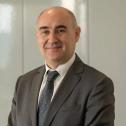Our Blog
Featured Blogs
12 April 2024
Sitting down with farmers in Bicol early this year, we heard a clear message: "We suffer many losses after disasters; reliable agricultural insurance could be our financial safety net,” they say. In 2023, the region experienced devastating floods and landslides. A few years earlier, Super Typhoon Goni tore through Bicol region, destroying crops and livestock. Such events are commonplace in the Philippines with an average of 20 typhoons occurring annually, and 8 to 9 of these making landfall. 1... Keep reading
05 April 2024
Africa is one of the most susceptible regions to the impacts of climate change, and the costs of climate change can be significant. Sub-Saharan Africa is already experiencing erratic weather patterns and is projected to face more extreme climate events. The agricultural sector, which contributed 17 percent to GDP in 2022, and employs more than 50 percent of sub-Saharan Africa's workforce is particularly vulnerable. In turn, the sector affects economic growth. The impact of a drought on medium-... Keep reading
14 March 2024
“ PRB, Indonesia, Tangguh !” This was the spirit of the week of March 4-7, 2024, when 37 government officials from five-line ministries and nine units within Ministry of Finance (MoF) convened at the Institut Teknologi Bandung (ITB). “PRB (Pembiayaan Risiko Bencana), Indonesia, Tangguh”, which translates to “disaster risk finance (DRF) for a resilient Indonesia” in Bahasa Indonesia, was the topic of discussion. What is DRF? DRF is an approach for financial planning, where countries can... Keep reading
29 February 2024
Disasters can wreak havoc on communities and economies. Munich Re reports that natural disasters in the first half of 2023 resulted in enormous economic losses of $110 billion, a third of which was caused by an earthquake in Türkiye and Syria. Estimated economic losses have increased from $52 billion annually in the 1980s to a staggering $228 billion a year over the first three years of the 2020s . As the frequency and intensity of such events continue to rise, governments need to proactively... Keep reading
12 February 2024
Ruins of a kasbah among the Atlas Mountains in Morocco due to the earthquake on Sept. 8, 2023. (Shutterstock.com/A.Pushkin) The financial protection gap against climate shocks and disasters is widening. Morocco was hit by an earthquake in September 2023, affecting more than 300,000 people in Marrakesh and surrounding areas. The direct physical damages from this disaster are estimated at US$3 billion (2.6% of GDP). Worldwide Financial Protection Gap To respond to the emergency needs of the... Keep reading
08 February 2024
Photo Credit: Simanta Talukdar / Shutterstock.com Many economies are suffering the impacts of flooding, from their effect on households and livelihoods to the disruption they cause to businesses and public infrastructure. Due to the number and intensity of flooding events increasing, the ability to accurately measure flood risk has been gaining greater interest across Emerging Market and Developing Economies (EMDEs). However, there is a limited amount of information available to public sector... Keep reading
08 December 2023
When the 1966 earthquake hit Uzbekistan, the entire capital city of Tashkent trembled. This powerful earthquake leveled hundreds of buildings to the ground. Many countries–former fellow Soviet republics—rushed to help save people, clean debris, and reconstruct houses and infrastructure. In 3-5 years, the city was completely rebuilt. Today, Tashkent is a "Pearl of Central Asia" with rapid new construction, economic development, and population growth. Over the past decade, these three factors... Keep reading

















